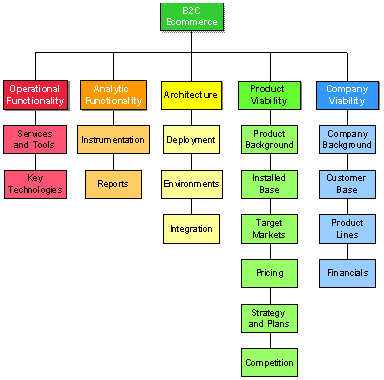IBM WebSphere Commerce Suite 6.0
Rich Ecommerce Services, Flexible Technologies, and Elegant Integration with External Applications
IBM WebSphere Commerce is IBM’s ecommerce offering. WebSphere Commerce was introduced in 1996. It was and is one of the leading software offerings for B2C ecommerce. IBM claims that 1,500 customer organizations have implemented the product. We recommend that you consider IBM WebSphere Commerce as the software to run your B2C ecommerce site. Its packaged services and easily customizable technologies provide excellent support for the activities that your customers want to perform. IBM provides a wealth of samples and examples to simplify and speed your implementation.
NETTING IT OUT
Many of your customers prefer doing business with you online. They go to your Web sites to learn about your products and services, to find products and/or services that address their needs, to configure and price the products and/or service s that they’d like to buy, and to purchase those products and/or services. They also set up and manage accounts with you. When those customers are consumers, we call these activities B2C (business to consumer) ecommerce.
IBM WebSphere Commerce, introduced in 1996, is IBM’s B2C (and B2B) ecommerce offering. Its current version is 6.0 Feature Pack 3. IBM WebSphere Commerce was and remains one of the leading software offerings for B2C ecommerce. IBM claims that 1,500 customer organizations have implemented the product. You can deploy it on-premise, hosted, or via SaaS subscription.
On the PSGroup Report Card for evaluating B2C ecommerce product and services, IBM WebSphere Commerce earns "exceeds requirement" grades in Web content, customer and product data, integration, and company viability. It needs improvement in search and analytic functionality.
Without qualification, we recommend that you consider IBM WebSphere Commerce as the software to run your B2C ecommerce site. Its packaged services and easily customizable technologies provide excellent support for the activities that your customers want to perform. IBM provides a wealth of samples and examples that simplify and speed your implementation and packages an elegant, Web Services-based approach to integration that supports the complete customer cycle—from finding products to receiving them.
IBM WEBSPHERE COMMERCE
An Ecommerce Market Leader Since 1997
IBM WebSphere Commerce is IBM’s B2C ecommerce software offering. The product was introduced as Net.Commerce Server in 1996. Its current version, which was released in December 2007, is Version 6.0 Feature Pack 3. Across the 12 years that it has been available, IBM claims that more than 1,500 customer organizations have purchased and implemented WebSphere Commerce. We’ve been writing about it since 1998. WebSphere Commerce was and is one of the leading ecommerce applications in functionality, technology, and market penetration across both B2C and B2B implementations in many industry segments.
You can license and deploy WebSphere Commerce in three ways: on-premise via perpetual license from IBM, hosted via perpetual license from IBM, and on demand as Software as a Service (SaaS) via subscription license from IBM’s partners. Most WebSphere Commerce customers have on-premise implementations. IBM began offering WebSphere Commerce SaaS deployment just this year. IBM expects to have eight to twelve SaaS implementations by the end of this year.
Packaging and Pricing
IBM packages WebSphere Commerce in these three packages:
- WebSphere Commerce Express is positioned as an easy-to-install, affordable, yet complete ecommerce package for mid-market companies.
- WebSphere Commerce Professional is positioned as a comprehensive solution. To Express, Professional adds support for workspaces, the recommendations engine, marketing experiments, IBM Gift Center supporting gift registries, and IBM Sales Center for delivering assisted-service.
- WebSphere Commerce Enterprise is the high-end package. To Professional, it adds Extended Sites support as well as comprehensive B2B capabilities.
- You can add premium search capabilities to any of the three WebSphere Commerce editions by purchasing and implementing IBM OmniFind Discovery Edition. The WebSphere Commerce catalog is supported as a source for OmniFind. So customers and agents can search to the level of product attributes.
- For on-premise and hosted deployments, IBM sells WebSphere Commerce on a pricing model of Value Units (VU), where 100 Value Units equal one CPU. List price per 100 VUs, or, essentially, per CPU, is:
- WebSphere Commerce Professional: $105,000
- WebSphere Commerce Express: $21,200
- WebSphere Commerce Enterprise: $164,000
For SaaS deployments, IBM licenses WebSphere Commerce to business partners who, in turn, offer the product to organizations like yours. The license model is based on a percentage of aggregate, net online sales for the hosted sites.
In addition, IBM prices Sales Center and Commerce Developer separately on a per-user basis. Also priced separately is the IBM Gift Center, which is priced per group of 25 stores. Commerce Developer is the product’s Java development toolset. It’s built on IBM’s Rational Developer toolset. You’ll need it for many customization tasks.
OmniFind Discovery Edition is also priced on the Value Units model. It lists for $775 per VU, or $77,500 per CPU.
EVALUATING IBM WEBSPHERE COMMERCE
In this report we evaluate IBM WebSphere Commerce against our framework for B2C ecommerce. The framework has evaluation criteria for:
- Operational functionality, which combines the technologies that you customize, configure, and implement and the packaged software services support customers’ activities and your delivery of a branded ecommerce experience.
- Analytic functionality, which provides the capabilities to measure, analyze, and refine your ecommerce experience.
- Architecture, the ecommerce software’s supported environments and some detail about its deployment options.
- Product viability, the factors for assessing the business risk in acquiring the ecommerce offering.
- Company viability, the factors for assessing the business risk in doing business with the ecommerce supplier.
We show these top level valuation criteria and their sub criteria in Illustration 1.
B2C Ecommerce Evaluation Framework

© 2008 Patricia Seybold Group Inc.
Illustration 1. This illustration shows the evaluation criteria and sub-criteria of the PSGroup B2C Ecommerce Evaluation Framework.
The Customers.com Perspective
B2C ecommerce systems are sometimes described as your online marketing and sales applications. That’s not our perspective. We’re the customers.com company. We always have a customer perspective. We believe that if you make it easy for your customers to do business with you ...
Sign in to download the full article
0 comments
Be the first one to comment.



